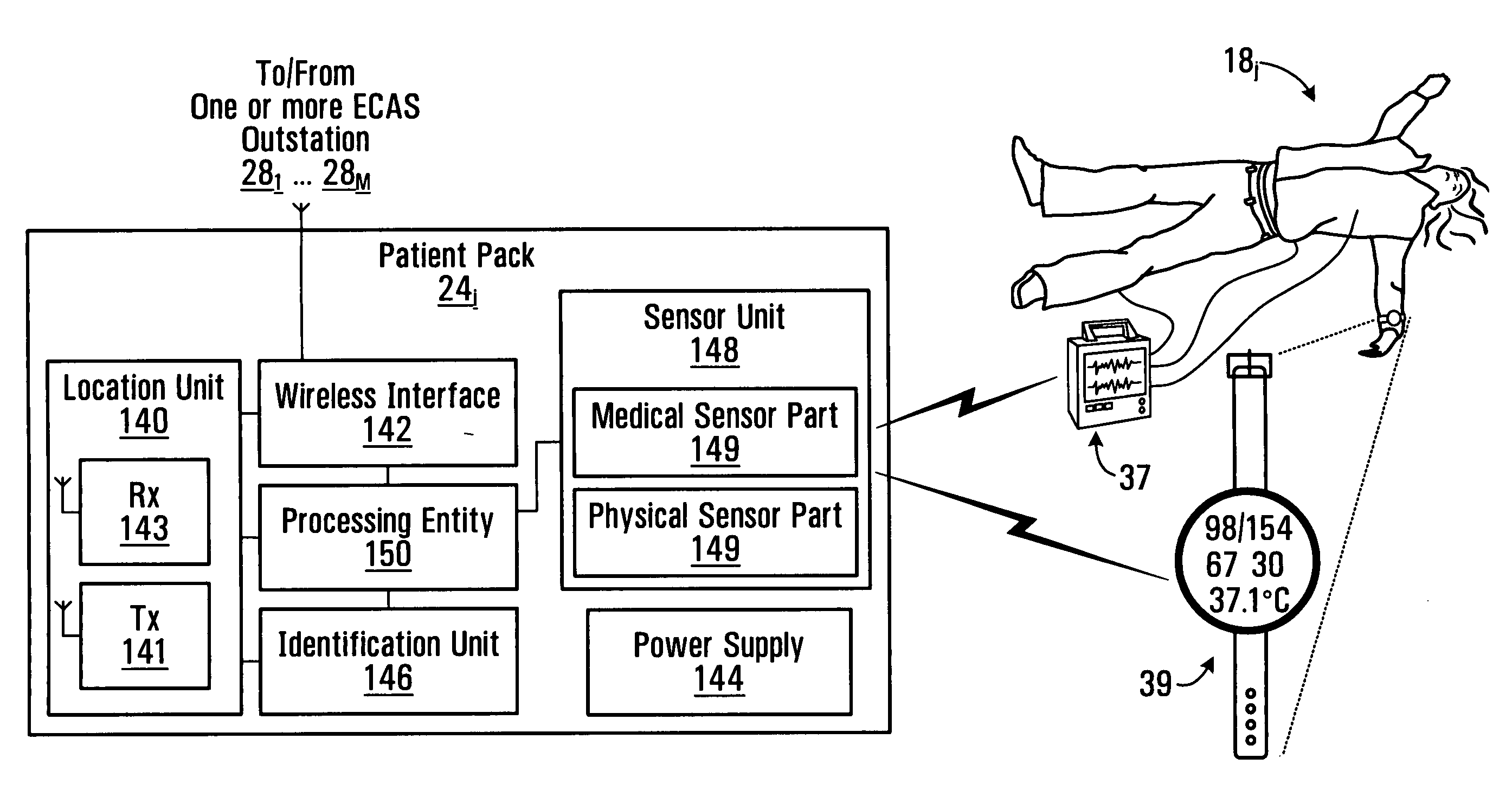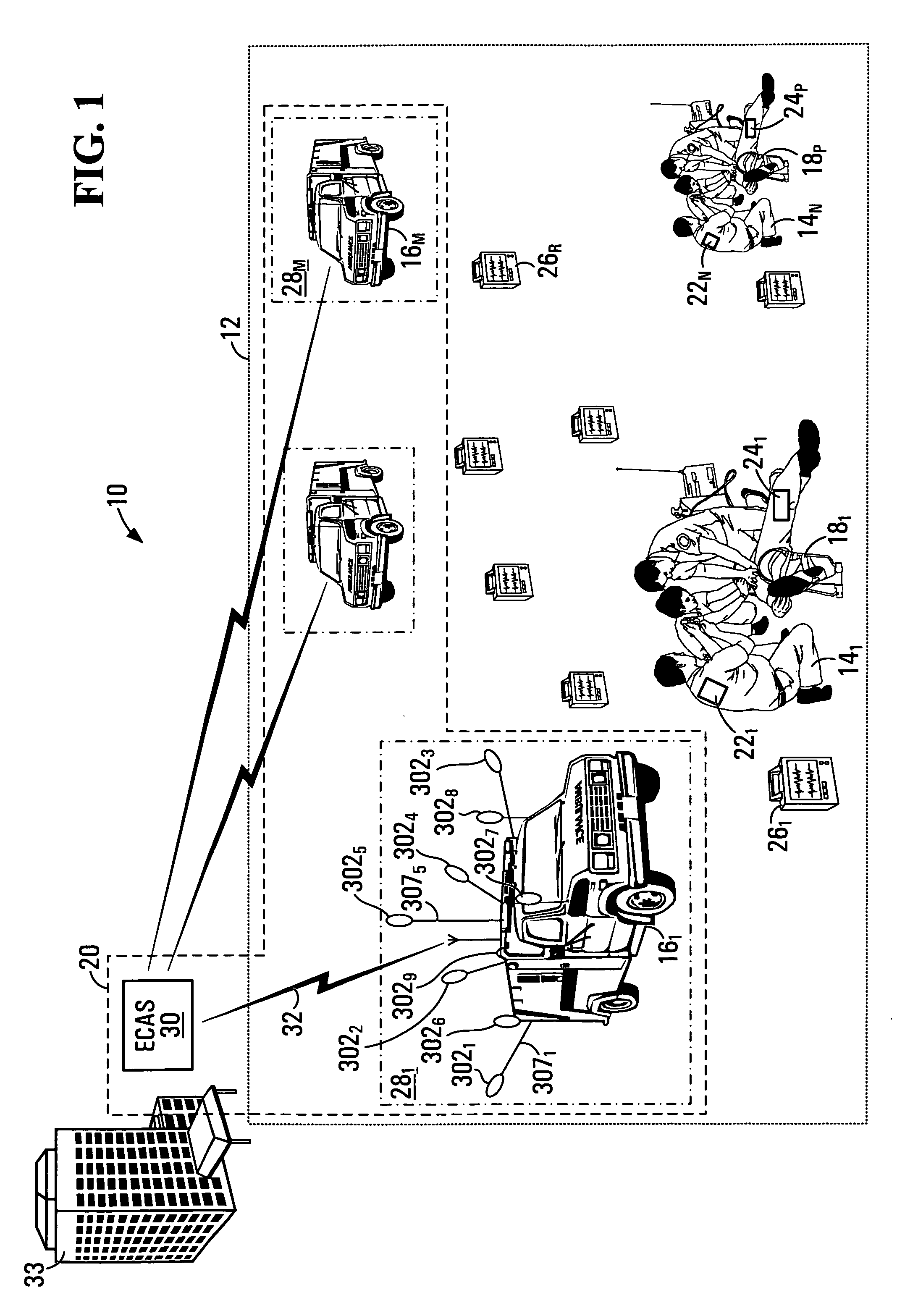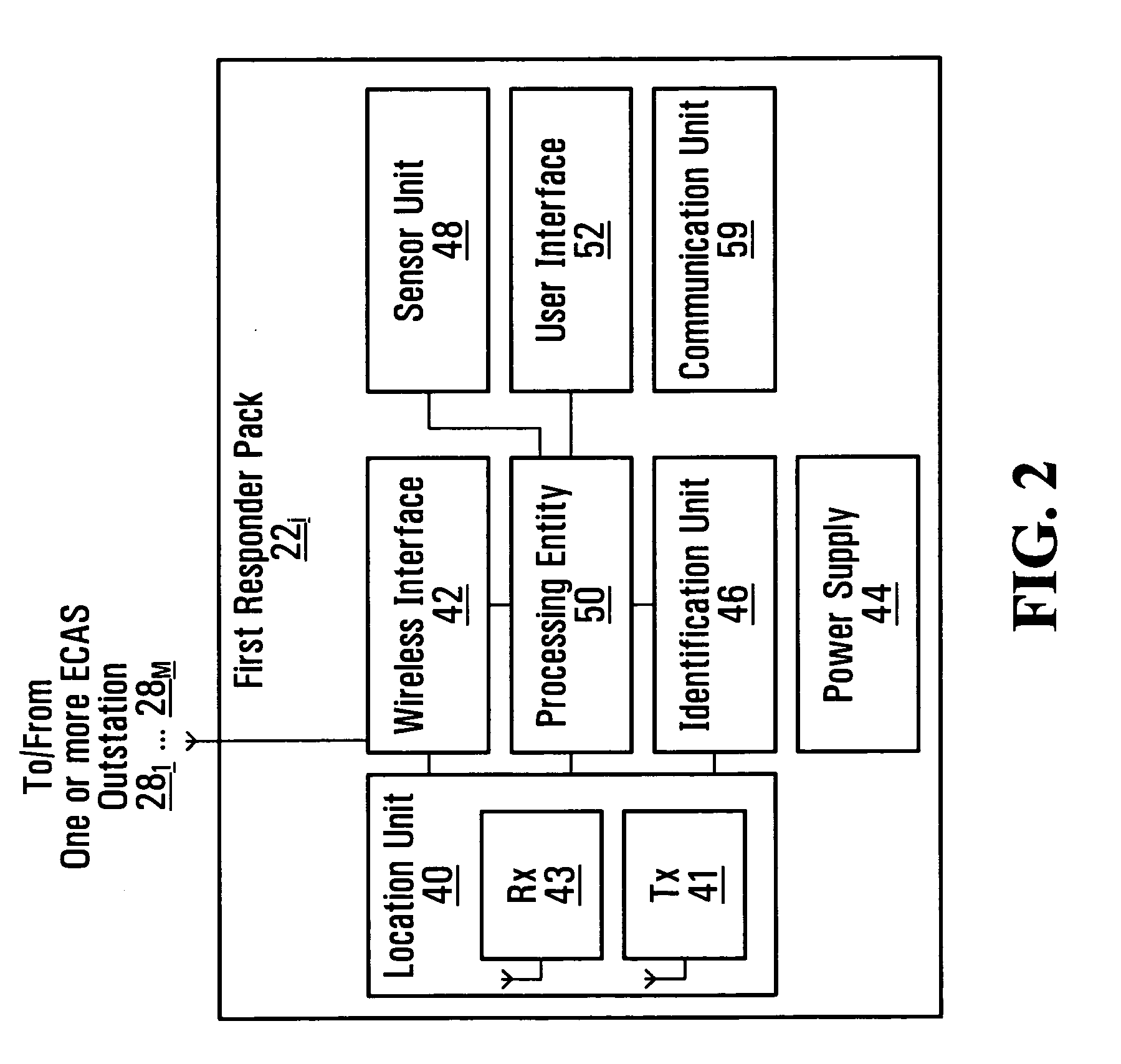Systems and methods for facilitating a first response mission at an incident scene
a technology for incident scene and first response, applied in the field of first response services, can solve the problems of limited connectivity of first responders, police officers or firefighters deployed at an incident scene, and the incident scene itself may be hazardous, so as to facilitate a first response mission
- Summary
- Abstract
- Description
- Claims
- Application Information
AI Technical Summary
Benefits of technology
Problems solved by technology
Method used
Image
Examples
example 1
[0217]By processing the data indicative of the environment at the incident scene 12 (i.e., location data, physical data, physiological data) produced by the environmental data processing engine 411, the situational context processing engine 421 determines that the following situation has occurred: vital signs of a patient 18x have dropped significantly (based on physiological data from the patient pack 24x of the patient 18x); none of the first responders 141 . . . 14N is currently treating the patient 18x (based on their location); a first responder 14k who initially treated the patient 18x is now far away and treating another patient (based on their location and / or other determinants of the situational context, such as communications involving the first responder 14k or a state of that other patient's patient pack); a first responder 14y is close to the patient 18x (based on their location); and the first responder 14y is not currently treating any of the patients 181 . . . 18P (b...
example 2
[0221]By processing the data indicative of the environment at the incident scene 12 produced by the environmental data processing engine 411 and by processing data relating to communications effected via the communication system 208, the situational context processing engine 421 determines that the following situation has occurred: a patient 18y is currently being treated by a first responder 14z (based on their location); and the first responder 14z has requested treatment information for the patient 18y using his / her first responder pack 22z, for example, by describing a physical condition or symptoms of the patient 18y and requesting assistance from a doctor to determine what treatment to give.[0222]Based on the data indicative of this situation, the institutional context processing engine 431 consults the institutional information system 200 to obtain institutional data relevant to this situation. For instance, the institutional data may include: data indicative that Dr. Smith i...
example 3
[0225]By processing the data indicative of the environment at the incident scene 12 produced by the environmental data processing engine 411 (and possibly by processing data relating to communications effected via the communication system 208), the situational context processing engine 421 determines that the following situation has occurred: twenty patients 181 . . . 1820 at the incident scene 12 have low vital signs (based on physiological data from their patient packs 241 . . . 2420 and possibly based on reports provided by the first responders 141 . . . 14N using their first responder packs 221 . . . 22N).[0226]Based on the data indicative of this situation, the institutional context processing engine 431 consults the institutional information system 200 to obtain institutional data relevant to this situation. For instance, the institutional data may include: data indicative that seventeen of the patients 241 . . . 2420 need immediate transportation to an ER (based on their vita...
PUM
 Login to View More
Login to View More Abstract
Description
Claims
Application Information
 Login to View More
Login to View More - R&D
- Intellectual Property
- Life Sciences
- Materials
- Tech Scout
- Unparalleled Data Quality
- Higher Quality Content
- 60% Fewer Hallucinations
Browse by: Latest US Patents, China's latest patents, Technical Efficacy Thesaurus, Application Domain, Technology Topic, Popular Technical Reports.
© 2025 PatSnap. All rights reserved.Legal|Privacy policy|Modern Slavery Act Transparency Statement|Sitemap|About US| Contact US: help@patsnap.com



